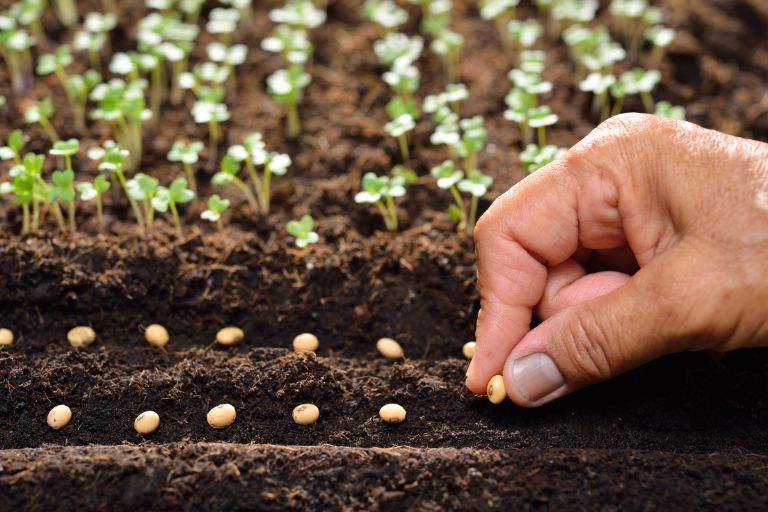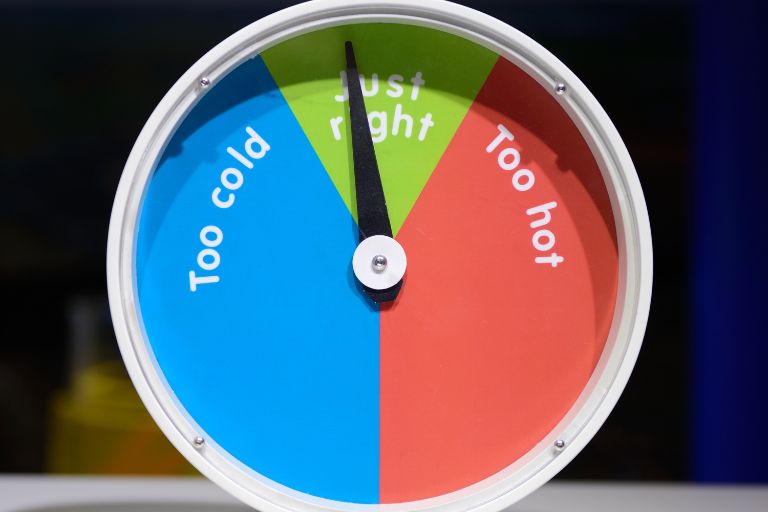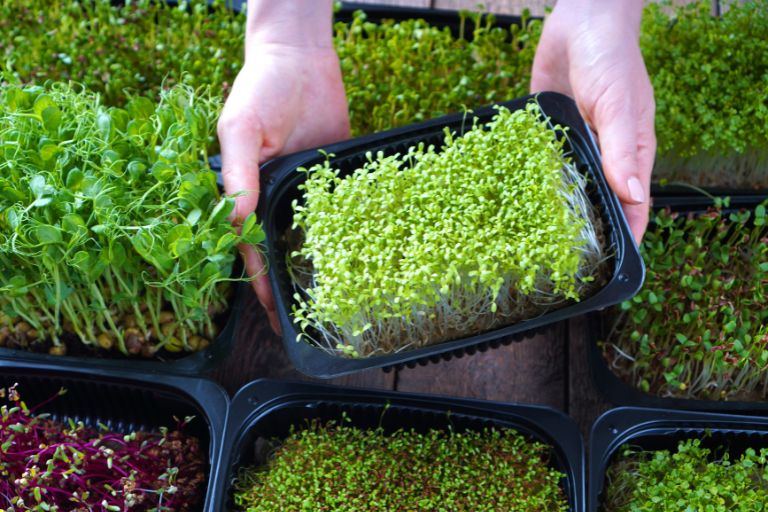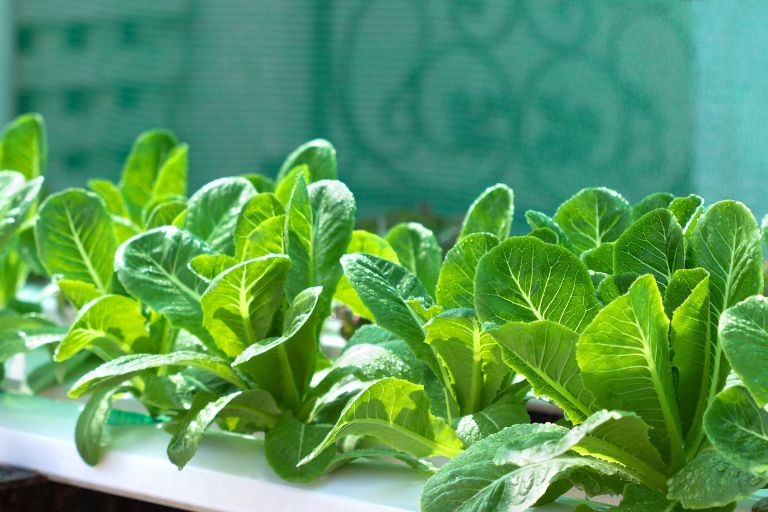Harnessing Sunlight: A Guide to Maximising Natural Light in Your Garage Garden

In this modern age of urbanisation and limited outdoor space, the appeal of gardening has not diminished, but rather adapted to the confines of our living spaces. For many gardening enthusiasts, the garage has become an unexpected haven – a sanctuary where the greenery of the outdoors can thrive within the protection of four walls. The challenge, however, is to harness nature’s most essential resource: sunlight.
Natural light is the lifeblood of any garden, driving the process of photosynthesis and nourishing plants to thrive. In the garden, where sunlight can be limited and unpredictable, maximising this precious resource is paramount. Whether you’re an experienced gardener or a novice enthusiast, unlocking the potential of natural light in your garage garden can mean the difference between thriving greenery and lacklustre growth.
This article will serve as your guide to mastering the art of maximising natural light in your garage garden. We’ll look at the strategic placement of plants, the selection of light-loving species and the integration of supplementary lighting solutions to create a thriving indoor oasis. From practical tips to creative design ideas, embark on a journey to transform your garage into a vibrant oasis where sunlight reigns supreme and your green thumb finds its full expression.
Importance of Natural Light
Natural light is the cornerstone of plant growth and vitality, playing a pivotal role in sustaining life and promoting optimal health within the botanical realm. The importance of sunlight goes beyond mere illumination; it serves as the primary catalyst for the intricate process of photosynthesis – the fundamental mechanism by which plants convert light energy into chemical energy to fuel their growth and metabolism.
At the heart of photosynthesis is chlorophyll, the green pigment found in plant cells that absorbs sunlight and initiates a series of biochemical reactions. When light photons strike chlorophyll molecules, they excite electrons, triggering a cascade of energy transfers that ultimately lead to the synthesis of glucose and oxygen. This process not only meets the plant’s energy needs, but also produces the oxygen that other organisms need to survive, underlining the symbiotic relationship between plants and the environment.
Sunlight also acts as a master regulator of plant development, influencing key physiological processes such as flowering and fruiting. The duration, intensity and spectral composition of light play a crucial role in determining plant phenology – the timing of developmental events such as budding, flowering and fruit ripening. For example, photoperiod-sensitive plants rely on changes in day length to initiate flowering, while light quality influences factors such as stem elongation and leaf expansion.
Sunlight also affects the synthesis and distribution of hormones in plants, which in turn affects their growth patterns and reproductive behaviour. For example, exposure to specific wavelengths of light, such as red and far-red light, can trigger or inhibit the production of hormones such as auxin and gibberellins, thereby modulating processes such as stem elongation and fruit development.
In essence, sunlight is not just an external force acting on plants, but an integral part of their biological machinery – a source of energy, information and regulatory cues that shape their growth trajectories and define their ecological interactions. From the germination of seeds to the ripening of fruit, every plant’s journey unfolds under the nurturing embrace of sunlight, underscoring its profound importance in the intricate tapestry of life.
Assessing Your Garage Space
Assessing the natural light available in your garage is essential to creating the optimum environment for your plants to thrive. Several factors contribute to the quality of sunlight in this indoor space, including direction, intensity and duration of exposure. Find out how you can assess these factors to better understand the sunlight conditions in your garage:
Directionality of light
Consider the orientation of your garage in relation to the path of the sun throughout the day. South-facing garages tend to receive the most sunlight, while north-facing garages may receive limited direct sunlight. East- and west-facing garages will receive sunlight at certain times of the day, with morning sun for east-facing garages and afternoon sun for west-facing garages.
Light intensity
Assess the intensity of sunlight reaching different areas of your garage. Look for places where direct sunlight enters through windows or skylights, as these areas will have the highest light intensity. Conversely, areas further from these openings may have lower light levels, potentially creating shaded areas within your garage.
Duration of sunlight exposure
Observe the length of time your garage is exposed to sunlight throughout the day. Keep track of when sunlight enters the room and how long it stays. Keep in mind that seasonal changes and nearby structures or vegetation can affect the duration of sunlight exposure, so regular monitoring is beneficial.
For a more accurate assessment of available natural light, consider using tools such as a light meter or smartphone apps designed to measure light intensity. These devices can provide quantitative data to complement your qualitative observations and help you make informed decisions about plant placement and supplemental lighting needs.
Strategic Placement of Plants
Strategically positioning your plants is the key to maximising sunlight in your garage garden. By placing your plants in the right places, you can ensure that they receive enough light for optimum growth. To help you position your plants effectively, here’s some advice:
Identify sunny areas
Start by identifying areas in your garage that receive the most sunlight throughout the day. These are usually near windows, skylights or other openings where direct sunlight can enter. Place your light-loving plants, such as herbs and vegetables that require full sun, in these areas to ensure they receive the maximum amount of light.
Consider plant height and growth habit
When positioning your plants, consider their height and growth pattern. Place taller plants at the back or centre of your garden area where they won’t shade smaller plants or block sunlight. This ensures that all plants have equal access to sunlight and prevents overcrowding.
Use shelving or hanging systems
To make the most of limited space in your garage garden, consider using shelving or hanging systems to optimise vertical space. Install shelves near windows or skylights at different heights to accommodate plants of different sizes. Hanging baskets or vertical garden structures can also be used to hang plants closer to sources of natural light, maximising their exposure.
Rotate plants regularly
Rotate your plants regularly to ensure that all sides receive equal exposure to sunlight. This is especially important for plants positioned away from direct sunlight, as it helps prevent them from leaning or stretching towards the light source. Rotate plants every few days or weeks to promote balanced growth and prevent sunburn or uneven development.
Monitor and adjust
Regularly monitor the amount of sunlight your plants receive and adjust their position as needed. Observe how the angle and intensity of sunlight changes throughout the day and adjust plant placement accordingly. This proactive approach will ensure that your plants receive optimal light levels for healthy growth and development.
Choosing Light Loving Plants
When it comes to indoor gardening with limited natural light, choosing the right plants is crucial to success. Fortunately, there are many plants that thrive in low-light conditions and are well suited to indoor growing. The following are some examples of plants that are hardy and adaptable to indoor environments with less sunlight:
Snake Plant (Sansevieria trifasciata) – Known for its striking vertical leaves and low maintenance, the snake plant is an excellent choice for low light environments. It can tolerate a wide range of light conditions, making it ideal for beginners or busy individuals.
Peace Lily (Spathiphyllum spp.) – With its glossy dark green leaves and elegant white flowers, the Peace Lily adds beauty and charm to interiors. It thrives in low to medium light and is known for its air purifying properties.
Spider plant (Chlorophytum comosum) – Characterised by arching foliage adorned with small ‘spiderettes’, Spider Plant is a hardy and easy to grow species that tolerates low light. It also produces tiny white flowers and is known for its air purifying properties.
Pothos (Epipremnum aureum) – A versatile and adaptable plant, Pothos has heart-shaped leaves that come in different shades of green, yellow or white. It thrives in low to bright indirect light and is prized for its trailing habit, making it ideal for hanging baskets or cascading from shelves.
Cast Iron Plant (Aspidistra elatior) – True to its name, the Cast Iron Plant is incredibly hardy and can withstand neglect and low light. Its dark green, leathery leaves add a touch of elegance to interiors, making it a popular choice for offices and homes alike.
ZZ Plant (Zamioculcas zamiifolia) – With its glossy, waxy leaves and upright growth habit, the ZZ Plant is a hardy and low-maintenance option for low-light environments. It requires minimal watering and can tolerate neglect, making it an excellent choice for busy people.
Philodendron (Philodendron spp.) – Philodendrons come in a variety of shapes, sizes and colours, making them versatile options for indoor gardens. Many philodendron varieties, such as Heartleaf Philodendron (Philodendron hederaceum) and Pothos Philodendron (Philodendron scandens), thrive in low light and are easy to care for.
Enhancing Natural Light
Enhancing natural light with reflective surfaces or mirrors is a simple yet effective strategy for brightening up indoor spaces, including garage gardens. Strategically placing reflective materials and using light-coloured walls can improve the distribution and intensity of sunlight in your garden area. Below are some ideas and their benefits:
Reflective surfaces
Incorporate reflective surfaces such as metal containers, polished stone or mirrored accents into your garden design. These surfaces bounce natural light around the room, creating a brighter and more luminous environment for your plants. Consider placing these reflective elements strategically near windows or light sources to maximise their effectiveness.
Mirrors
Incorporate mirrors into your garage garden to enhance natural light and create the illusion of depth and spaciousness. Position mirrors opposite windows or light sources to reflect incoming sunlight deeper into the room. This not only increases the overall brightness, but also enhances the visual appeal of your garden by adding dimension and perspective.
White or light-coloured walls
Choose white or light-coloured walls in your garage garden to maximise the reflection of natural light. Light-coloured surfaces have a higher albedo, meaning they reflect more light and heat than darker colours. By painting the walls white, cream or pale pastels, you can significantly brighten the room and create a brighter atmosphere.
The benefits of white or pale walls
– Increased light diffusion: Light-coloured walls scatter and diffuse natural light more effectively, minimising shadows and creating a more uniform lighting environment for your plants.
– Improved visual appeal: Bright walls create a clean and fresh backdrop that allows the vibrant colours of your plants to stand out. This visually pleasing contrast adds depth and vibrancy to your garden space.
– Improved energy efficiency: Bright walls help reduce the need for artificial lighting during the day by maximising the use of natural light. This can lead to energy savings and a more sustainable garden.
These simple yet effective strategies not only enhance the aesthetic appeal of your garden, but also promote the health and vitality of your plants by providing them with the light they need to flourish.

Supplementing with Artificial Lighting
In indoor gardening, especially in rooms with limited natural light or during the darker months, supplementing sunlight with grow lights is essential to ensure optimal plant growth and health. Grow lights mimic the spectrum of sunlight, providing plants with the wavelengths necessary for photosynthesis and promoting vigorous growth. Below you’ll find an exploration of the effective use of grow lights and recommendations for selecting the right ones based on plant needs and space constraints:
Understanding grow lights
Grow lights come in several types, including fluorescent, LED (light-emitting diode) and HID (high-intensity discharge). LED grow lights are becoming increasingly popular due to their energy efficiency, customisable spectrum and long life. When choosing grow lights, consider factors such as light intensity, spectrum and energy efficiency to meet the specific needs of your plants.
Supplement natural sunlight
Grow lights act as a supplement to natural sunlight, especially in areas where sunlight is limited or during seasons with shorter days. They extend the duration of light exposure for plants, ensuring they receive sufficient light for photosynthesis and growth. In addition, grow lights allow gardeners to grow plants indoors all year round, regardless of outdoor light conditions.
Choosing the right grow lights
Light spectrum – Choose grow lights that provide a full spectrum of light, including blue (for vegetative growth) and red (for flowering and fruiting). Some LED grow lights allow you to adjust the spectrum according to the growth stage of the plant.
Light intensity – Make sure your grow lights provide the right light intensity for your plants’ needs. Different plants require different levels of light intensity, so look for lights with adjustable brightness settings where possible.
Energy efficiency – Choose energy efficient grow lights to minimise power consumption and reduce running costs. LED grow lights are generally more energy efficient than fluorescent or HID lights and produce less heat, making them safer for indoor use.
Space constraints – Consider the size and layout of your indoor gardening space when choosing grow lights. Choose lights that fit within your available space and can be easily mounted or positioned to provide even light coverage to all plants.
Placement and duration
Position grow lights above your plants at an appropriate distance to ensure even light distribution and to prevent light burn. Follow the manufacturer’s recommendations for recommended hanging heights and hours of light based on the specific needs of your plants. In general, most plants require around 12-16 hours of light per day for optimum growth.
Monitor and adjust
Monitor your plants regularly to ensure they are receiving adequate light from both natural sunlight and grow lights. Adjust the position and duration of grow lights as needed to maintain optimal light levels and prevent problems such as leggy growth or light stress.
Monitoring Light Levels
Monitoring light levels with light meters or smartphone apps is essential for ensuring optimal plant growth conditions in indoor gardens. Find out why it’s important and how it can help you adjust plant placement or supplemental lighting according to seasonal changes:
Optimise plant growth – Light is one of the most important factors influencing plant growth and development. By monitoring light levels, gardeners can ensure that their plants receive the appropriate amount of light for photosynthesis and overall health. Insufficient light can lead to stunted growth, leggy plants and poor flowering or fruiting, while excessive light can cause sunburn or leaf damage.
Accurate measurement – Light meters or smartphone apps designed to measure light intensity provide accurate and quantitative data on the amount of light reaching plants. This information allows growers to assess whether light levels are meeting the specific needs of their plants and make informed decisions about adjusting plant placement or supplemental lighting.
Adjust plant placement – Based on light meter readings, gardeners can determine which areas of their indoor garden receive the most or least light. They can then adjust plant placement accordingly, moving light-loving species closer to light sources or rearranging plants to ensure even light distribution throughout the room. This optimisation maximises plant access to light and promotes balanced growth.
Supplemental lighting – As the seasons change, natural light levels can fluctuate due to factors such as changes in daylight hours or changes in the angle of the sun. To compensate for these variations, growers can use supplemental lighting, such as grow lights, to provide consistent light levels for their plants. Light meters help ensure that supplemental lighting is used effectively by measuring light levels and guiding adjustments as needed.
Adapting to seasonal changes – As the seasons change, the angle and intensity of sunlight entering indoor spaces can vary. In winter, daylight hours are shorter and the sun may be lower in the sky, resulting in lower light levels. Conversely, in summer, daylight hours are longer and the sun is higher in the sky, resulting in more intense sunlight. By monitoring light levels throughout the year, gardeners can anticipate these seasonal changes and adjust plant placement or supplemental lighting accordingly to maintain optimal growing conditions.
Prevent light stress – Monitoring light levels helps prevent light stress in plants, which can occur when they receive too much or too little light. By maintaining appropriate light levels and adjusting as needed, gardeners can minimise the risk of light-related problems and ensure their plants thrive all year round.
Maintenance and Care
Maintaining cleanliness in your indoor garden is crucial to ensuring optimal light penetration and overall plant health. Below are some tips for keeping your garden space clean and promoting efficient light distribution:
Dust regularly – Dust can build up on plant leaves and surfaces, reducing the amount of light that reaches the plants. Dust leaves and surfaces regularly with a soft brush, microfibre cloth or a gentle spray of water. This will help maximise light penetration and prevent the build-up of dust that can inhibit photosynthesis.
Clean lights – Dust and debris can also collect on light fixtures, reducing their effectiveness in providing supplemental lighting. Clean luminaires regularly to remove any build-up and ensure that they emit maximum light output. Turn off lights and allow them to cool before cleaning to avoid the risk of burns.
Cut back overgrown plants – Overgrown plants can block light from reaching neighbouring plants, resulting in uneven light distribution and reduced growth. Regularly cut back overgrown foliage to maintain a balanced and open canopy that allows light to penetrate evenly throughout the garden. Use clean, sharp pruning shears to make clean cuts and encourage healthy growth.
Prune yellowing or damaged leaves – Yellowing or damaged leaves can indicate light stress or deficiencies in the plants. Remove these leaves promptly to encourage new growth and prevent further stress to the plant. Pruning also allows for better air circulation and light penetration within the plant canopy, promoting overall health and vigour.
Monitor plant health – Keep a close eye on your plants for signs of light stress or deficiency, such as pale or yellowing leaves, elongated stems or reduced growth. Adjust plant placement or supplemental lighting as needed to address any problems and ensure plants are receiving adequate light for optimal growth.
Rotate plants – Regularly rotate your plants to ensure that all sides receive equal light exposure. This prevents plants from leaning or stretching towards the light source and promotes balanced growth. Rotate plants every few weeks or as needed to promote even development and prevent light-related problems.
Maintain a clean environment – Keep the area around your indoor garden clean and tidy to maximise light penetration and airflow. Remove any debris, dead plant material or obstacles that may block or inhibit light distribution. A clean and well-organised gardening area promotes healthy plant growth and reduces the risk of pest infestation or disease.
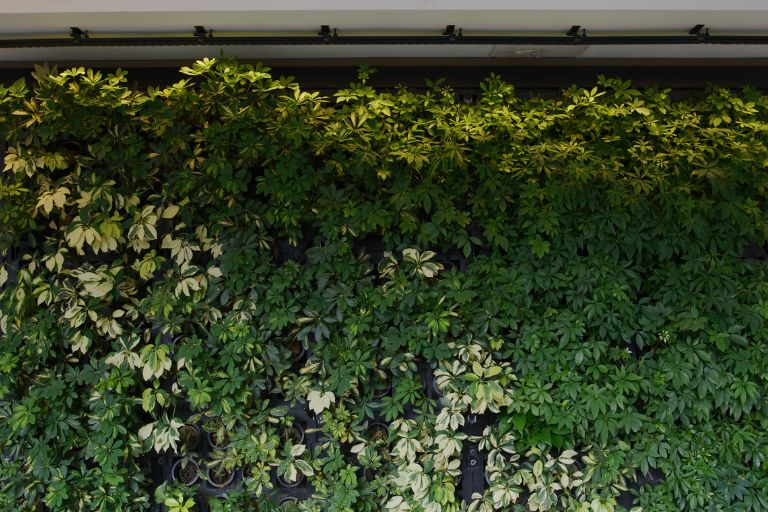
Creative Design Ideas
Designing a garage garden that is both functional and aesthetically pleasing requires creativity and thoughtful planning. Below are some inspirational design concepts for arranging plants within the garage space, as well as examples of aesthetically pleasing garage gardens that maximise natural light:
Vertical gardens – Make the most of vertical space by installing shelving, hanging baskets or wall-mounted planters to create a vertical garden. Arrange plants at different heights to maximise light and create visual interest. Showcase cascading plants such as pothos or spider plants alongside upright varieties such as snake plants or peace lilies for a dynamic and lush display.
Suspended gardens – Create a hanging garden using macramé plant hangers or ceiling hooks. Hang plants at different heights to fill the vertical space and maximise light penetration. Mix and match different types of plants with contrasting foliage textures and colours to add depth and dimension to your garage garden.
Terrariums and glass containers – Incorporate terrariums or glass containers to showcase small plants or succulents. Place them on tabletops, shelves or windowsills to create mini landscapes in your garage garden. Experiment with different container shapes, sizes and arrangements to add visual interest and create focal points in your space.
Living walls – Install a living wall or green wall system to cover a large wall space with lush vegetation. Choose plants that thrive in low light conditions and have trailing or cascading growth habits to create a verdant backdrop. Living walls not only maximise natural light, but also serve as an eye-catching focal point and conversation piece in your garage garden.
Functional garden workspace – Incorporate functional elements such as potting benches, storage shelves or work stations into your garage garden design. Create a dedicated space for gardening activities where you can pot plants, store gardening tools and organise supplies. Incorporate natural materials such as wood or bamboo to create a warm and inviting atmosphere.
Seasonal themes – Rotate plant displays and decorations according to seasonal themes or holidays to keep your garage garden fresh and appealing all year round. Decorate with seasonal plants, flowers or themed accessories to celebrate different seasons and add a festive touch to your indoor garden space.
Some examples of aesthetically pleasing garage gardens
Modern Minimalist Garden – A garage garden featuring sleek shelving units with minimalist plant arrangements, clean lines and geometric shapes. Splashes of green contrast with neutral walls and flooring to create a contemporary and tranquil atmosphere.
Botanical oasis – A lush and green garage garden filled with tropical plants, ferns and palms arranged in a jungle-inspired setting. Natural wood accents, hanging vines and dappled sunlight create a serene and exotic retreat within the garage space.
Urban Jungle Retreat – An eclectic garage garden featuring a diverse collection of plants, including cacti, succulents and air plants, displayed in vintage containers and repurposed furniture. String lights, colourful textiles and eclectic decorative elements add whimsy and charm to the urban jungle theme.
Zen Garden Sanctuary – A serene garage garden designed as a tranquil Zen retreat with bonsai trees, moss gardens and minimalist stone arrangements. Clean lines, Japanese-inspired décor and a soothing colour palette evoke a sense of harmony and balance, creating a peaceful oasis for relaxation and meditation.
Whether you prefer a sleek, modern aesthetic or a lush, tropical feel, there are endless possibilities to create a garage garden that reflects your personal style and cultivates a connection with nature.
Sustainability and Eco-Friendly Practices
Encouraging green practices in indoor gardening not only benefits the environment, but also contributes to a sustainable and responsible lifestyle. By adopting practices such as using recycled materials for shelving and choosing energy-efficient lighting solutions, gardeners can minimise their impact on the environment and contribute to a healthier planet.
When setting up your indoor garden, consider using recycled materials for shelving and containers. Repurposing items such as old wooden crates, pallets or plastic containers not only reduces waste, but also adds a unique and rustic charm to your garden space. By giving new life to discarded materials, you can reduce the demand for new resources and contribute to a more circular economy.
Choosing energy-efficient lighting solutions, such as LED grow lights, is another green practice that can significantly reduce energy consumption and greenhouse gas emissions. LED lights use less electricity and produce less heat than traditional lighting sources, making them an environmentally sustainable option for indoor gardening. By investing in energy efficient lighting, gardeners can reduce their carbon footprint and save on energy costs in the long run.
Indoor gardening itself offers a host of environmental benefits that help reduce our overall carbon footprint. By growing your own fruit, vegetables and herbs indoors, you can significantly reduce the need to transport produce over long distances. This helps to reduce greenhouse gas emissions associated with food transport and distribution, as well as reducing dependence on fossil fuels.
Indoor gardening also allows for more efficient use of resources such as water and fertiliser compared to traditional outdoor gardening. By controlling factors such as watering schedules and nutrient levels, gardeners can minimise waste and conserve valuable resources. In addition, indoor gardens provide opportunities for composting organic waste and recycling plant materials, further reducing environmental impact and promoting sustainability.
As we embrace green practices in indoor gardening and reduce our reliance on conventional food systems, we can take meaningful steps towards creating a more sustainable future. Through conscious choices such as using recycled materials, choosing energy-efficient lighting and growing our own food indoors, we can contribute to a healthier planet and inspire others to join us in caring for our environment for generations to come.
Indoor gardening is not only a rewarding and fulfilling hobby, but also an opportunity to adopt eco-friendly practices and contribute to a healthier planet. By maximising natural light, using recycled materials and opting for energy-efficient lighting solutions, gardeners can create sustainable and environmentally conscious indoor garden spaces.
Through thoughtful design and conscious choices, indoor gardeners can minimise their carbon footprint and reduce their dependence on conventional food systems. By growing their own fruits, vegetables and herbs indoors, they can reduce greenhouse gas emissions associated with food transport and distribution, conserve resources and promote a more circular economy.
In addition, indoor gardening offers many benefits beyond environmental sustainability, including improved air quality, enhanced well-being and a deeper connection to nature. By growing plants in the comfort of our own homes, we not only reap the rewards of fresh and nutritious produce, but also cultivate a sense of stewardship and responsibility towards our planet.
As we continue to explore the possibilities of indoor gardening and embrace eco-friendly practices, let us strive to inspire others to join us on this journey towards a greener and more sustainable future. Together we can make a meaningful difference in protecting our environment, promoting biodiversity and nurturing the beauty and abundance of nature within our own living spaces.

